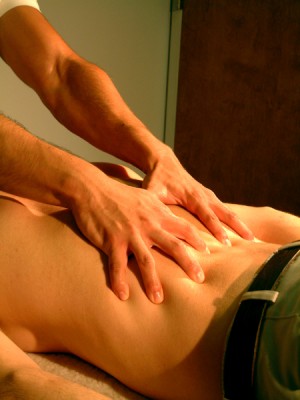
The Science behind Massage: Why does it work?
2 CommentsFor thousands of years, we have known that massage ‘works’. We know from millions of subjective reports and hundreds of research studies that massage therapy reduces pain. What we have not realized, until recently, is why massage therapy works. Not knowing the ‘why’ behind results does not demand a lot of respect from the medical community. In the past, doctors have treated massage therapy as something they didn’t discourage, but didn’t necessarily prescribe either. Most of the general public saw massage therapy as a luxury or a special treat.
Well, times they are a changin’!
 According to the American Massage Therapy Association:
According to the American Massage Therapy Association:
- 75% of the individuals surveyed claim their primary reason for receiving a massage in the past 12 months was medical (including pain relief, soreness, stiffness or spasm, injury recovery, migraines, and injury prevention).
- 61% of the individuals surveyed stated their physician has recommended they get a massage!
- Individuals who receive massage are also looking for medical settings to receive their massages more than ever before (i.e. physical therapy offices, chiropractic offices, orthopedic offices, etc.).
So, what has changed? Why are we moving away from these previously held beliefs about massage therapy? There are a lot of reasons, including the improvement in massage curriculum, the large number of continuing education opportunities, and the increasingly strict license requirements in the states. But, when it comes to the medical community, the proof is in the pudding research.
The latest research has shown (on a cellular level) that massage therapy helps the body heal. Even after one session, the body starts responding to massage therapy. Researchers did blood and muscle tests on individuals before and after a vigorous workout; one group received massage therapy after exercise and the other group didn’t. The ‘after massage’ results surprised researchers. The post-massage blood and muscle tissue showed an increase in a gene responsible for mitochondria development. The mitochondria are known for cell growth and energy production. The lifting and kneading of muscle tissue (common Swedish and deep tissue technique) also was shown to ‘turn off’ genes associated with inflammation. The research also contradicted a long believed idea that massage therapy pushes lactic acid out of muscles.
Why does this matter? This finally proves on a cellular level that massage therapy is improving recovery time after exercise and injury. This is the kind of research and results that will help educate physicians and the general public that massage therapy is a valid treatment for pain, inflammation, and soft-tissue recovery.
Click to Schedule a Free Assessment
The Athletico blog is an educational resource written by Athletico employees. Athletico bloggers are licensed professionals who abide by the code of ethics outlined by their respective professional associations. The content published in blog posts represents the opinion of the individual author based on their expertise and experience. The content provided in this blog is for informational purposes only, does not constitute medical advice and should not be relied on for making personal health decisions.
Sources:
Massage Mystery Mechanism, Gisela Telis, Feb. 2012, sciencemag.org
Regimens: Massage Benefits are More Than Skin Deep, Roni Caryn Rabin, September 2010, New York Times


2 Comments
Allie
I stay away from what massage can heal on your body and promote what you gain because of receiving therapy. I have not found scientific proof of exactly what it does. Passive stretching does wonders for a muscle, so I focus on that in all of my sessions. People sometimes want to see written somewhere specifically what it “cures”, I just wish I had a scientific answer for them.
Candice
I agree Allie. Clients will often times ask questions like, “can massage cure my migraines?” or some other ailment. I usually respond by explaining that I/massage can’t ‘cure’ or ‘fix’ your migraines or other condition, but I might be able to give you some relief, lessen the frequency and duration of your symptoms, and help your body heal itself naturally. There is still a lot of research that can be done on Massage Therapy but I think we are getting closer and closer to understanding why it works and finding the science to back it up. 🙂